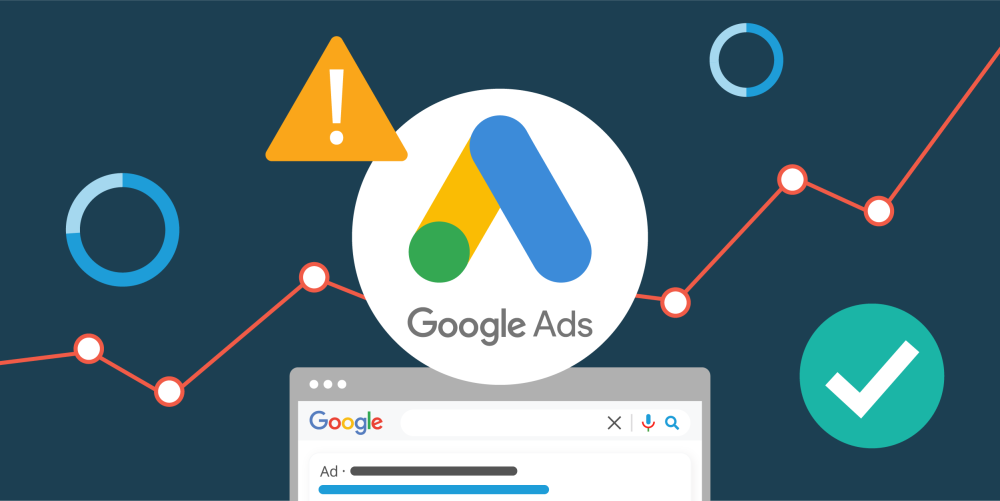HOW TO Create High-Converting Google Ads Campaigns without Burning Your Budget: A Step-by-Step Guide
Does the thought of Google Ads leave you feeling like you're throwing money into a digital abyss? You're not alone. Countless businesses struggle to navigate the complexities of Google Ads, often ending up with lackluster results and a dwindling budget.
But wait! This doesn't have to be your reality. Here's the good news: with the right approach, Google Ads can be a powerful tool to supercharge your marketing and drive real results for your business.
This comprehensive guide will equip you with a step-by-step roadmap and winning strategies to launch effective Google Ads campaigns. We'll show you how to target the right audience, craft compelling ad copy, and optimize your landing pages – all with the goal of generating leads, boosting sales, and keeping your budget in check.
Step 1: Define Your Goals & Target Audience
Before diving headfirst into keyword research, take a step back and identify your goals. . What do you want to achieve with your Google Ads campaign?

Define Your Objectives:
Website Traffic: Do you want to drive a flood of visitors to your website, generate leads, or build brand awareness?
Phone Calls: Is getting potential customers on the phone your top priority? Optimize your campaign to encourage direct calls.
Online Sales: Are you looking to turn clicks into conversions and boost online revenue? Craft calls to action that drive purchases.
Once you know your goals, it's time to identify your ideal customer. Imagine your perfect customer – their age, interests, online behavior, the challenges they face. Understanding this persona is critical for crafting compelling ads that resonate:
Demographics: Age, gender, location, income – knowing these details helps you tailor your message to the right audience.
Interests: What are your ideal customers passionate about? What websites do they frequent? Targeting their interests increases the relevance of your ads.
Online Behavior: How do they search for products or services like yours? Understanding their search habits allows you to target the right keywords.
Step 2: Keyword Research - Quality Over Quantity:
Gone are the days of broad keyword targeting. Focus on long-tail keywords – specific phrases with lower search volume but higher conversion intent. These keywords attract users further along the buying journey, resulting in better click-through rates (CTR) and a higher chance of conversion.
Pro Tip: Utilize Google Keyword Planner and competitor research tools to discover relevant long-tail keywords with strong conversion potential.
Step 3 : Choose your Captivating Hook : Capturing Attention in the Digital Age :
In today's online ad jungle, grabbing attention fast is essential, especially for video ads. With viewers easily clicking away, a strong opening (hook) is crucial to captivate them and keep them watching.
What is a Hook?
A hook is a brief but impactful element at the beginning of a video that immediately grabs the viewer's attention and piques their curiosity.
Why is a Hook Important for Google Ads Videos?
Having a strong hook is essential for:
Increasing viewership: A captivating hook entices viewers to click on your ad and start watching.
Boosting engagement: A well-crafted hook keeps viewers hooked, ensuring they watch a significant portion of your ad.
Bonus : Types of Hooks for Google Ads Videos
There are various ways to create an effective hook for your Google Ads videos. Here are some common approaches:
Ask a thought-provoking question: Pose a question that resonates with your target audience, sparking their interest and encouraging them to seek the answer in your ad.
Highlight a problem or pain point: Address a common challenge or frustration faced by your target audience, demonstrating how your product or service can provide a solution.
Show a surprising or unexpected moment: Capture attention with a jarring or unexpected visual or sound that breaks through the clutter and makes viewers want to know more.
Use humor or storytelling: Engage viewers with a funny anecdote or a relatable story that connects with their emotions and experiences.
Step 4: Craft Compelling Ad Copy :
Your ad copy is your first impression on potential customers. Make it count! Here's what your ad copy should include:
Highlight the Benefit: Don't just list features; focus on the benefits your product or service offers. How will it solve your target audience's pain points or make their lives easier?
Keep it Clear & Concise: People skim online. Use clear, concise language that's easy to understand. Avoid jargon and technical terms that might confuse your audience.
Strong Call to Action (CTA): Tell users exactly what you want them to do next. Whether it's "Shop Now," "Learn More," or "Get a Free Quote," make your CTA clear, prominent, and action-oriented.
Hook + Benefit + Clarity + CTA = High-Converting Ad
Step 5: Leverage Ad Extensions for Maximum Impact
Imagine your Google Ad as a tiny billboard in a crowded digital marketplace. Text alone might not be enough to grab attention and stand out. That's where ad extensions come in – they're like superchargers that boost your ad's visibility and user engagement. Here's how these extensions can take your campaigns to the next level:
Sitelink Extensions: Think of these as mini-menus displayed below your ad. Direct users to specific, relevant pages on your website showcasing different products, services, or promotions. This allows users to easily find what they're looking for without needing to visit your homepage first.
Call Extensions: Make it ridiculously easy for potential customers to connect with you directly. Call extensions display your phone number right within your ad, allowing users to initiate a call with a single tap on their mobile device. This is a fantastic option for businesses that prioritize phone inquiries.
Location Extensions: Showcase your physical presence and encourage in-store visits. Location extensions display your business address and a map link directly on your ad. This is perfect for brick-and-mortar businesses or those offering local services.
Step 6: Optimize Your Landing Pages
You've hooked them in with a killer ad, but the job isn't done yet. The landing page is where the magic of conversion happens – it's where those clicks transform into paying customers or loyal leads. Here's how to turn your landing pages into conversion powerhouses:
Mobile First: Forget "mobile-friendly" – think "mobile-first." Over half of all web traffic comes from mobile devices. Google prioritizes mobile-friendly websites in search results, so your landing page absolutely must provide a flawless experience on smartphones and tablets
Visually Appealing Design: First impressions matter! Your landing page needs to be visually appealing and grab attention fast.
Speak Their Language - Consistency is Key: Maintain consistent messaging between your ad copy and your landing page. Use the same keywords and value propositions to avoid confusing users.
Step 7: Embrace Conversion Tracking & A/B Testing
Once your campaign is live, track your conversions meticulously. This allows you to see which keywords, ad variations, and landing pages are performing best.
A/B testing involves comparing different versions of your ad copy or landing pages to see which one converts better. Use these insights to continuously optimize your campaigns and maximize your return on investment (ROI).
Step 8: Budget Management & Bidding Strategies
Set realistic daily or monthly budgets to avoid overspending. Utilize Google Ads' bidding strategies to automate bidding based on your goals. Here are some popular options:
Target CPA: Set a maximum cost you're willing to pay for a conversion.
Maximize Clicks: Focus on driving as much traffic as possible within your budget.
Target ROAS: Optimize for a specific return on ad spend (revenue generated from ad clicks).
Bonus Tip: Google Ads offers automated campaign management features. These can be helpful for beginners but require close monitoring and adjustments as needed.
Remember, creating high-converting Google Ads campaigns is an ongoing process. By following these steps, consistently monitoring your performance, and refining your strategy, you can achieve social media superstardom… without burning your budget!





